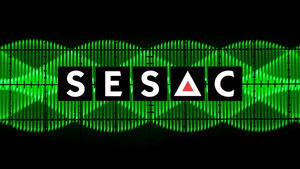US collecting society SESAC has secured a higher rate for its members when their music is played on American radio stations after negotiations with the Radio Music License Committee went to arbitration. However, both sides are claiming victory, because SESAC was aiming for a bigger increase.
Ed Atsinger from the RMLC, which negotiates music royalty rates for much of the US radio industry, says, “Despite the fact that no increase was warranted, the arbitration decision constitutes a significant victory for RMLC-represented radio stations given SESAC’s demands, and comes at a challenging economic time for the industry”.
The RMLC, he adds, “intends to continue to defend and protect the interests of its members at a time when all of the performing right organisations are seeking to aggressively increase their fees”.
How radio stations pay royalties to songwriters and music publishers in the US is slightly more complicated than in most other countries, because there are five organisations representing the performing rights in songs: BMI, ASCAP, GMR and AllTrack, as well as SESAC.
Each society represents a different repertoire, although there is plenty of crossover because co-writers on a song may be members of different collecting societies.
The big two performing right organisations, BMI and ASCAP, are both regulated by the so called consent decrees, with any disputes between the societies and licensees going to special rate courts where a judge ultimately decides what each licensee - or group of licensees - should pay.
Both SESAC and GMR are keen to ensure that they don't end up being regulated in that way, although SESAC has agreed to an arbitration process with some licensees, including the RMLC. The most recent licensing agreement between SESAC and the RMLC’s members expired at the end of 2022 and, with no agreement reached on a new rate, those negotiations went to arbitration in April last year.
That arbitration process has now completed, with a new rate set for the 2023-2026 licensing period. It’s a blanket fee of 0.2824% of revenue, a 10.4% increase on the previous period.
Although SESAC didn’t get as big an increase as it hoped, it has welcomed the outcome of the arbitration process, in particular because the arbitrator knocked back efforts by the RMLC to connect the SESAC rate to the regulated rate secured by ASCAP and BMI through the rate courts.
COO of SESAC Performing Rights, Scott Jungmichel, says that the arbitration panel “awarded SESAC an over 10% increase while rejecting the RMLC’s attempts to lower the rate, turn back the clock, and yoke SESAC to the regulated rates paid by ASCAP and BMI”.
As well as the top-level rate increase, Jungmichel also welcomed another element of the arbitration panel’s decision, stating that “the revenue base subject to the fee is significantly greater than the revenue upon which station groups had sought to pay under the 2017 award”.

